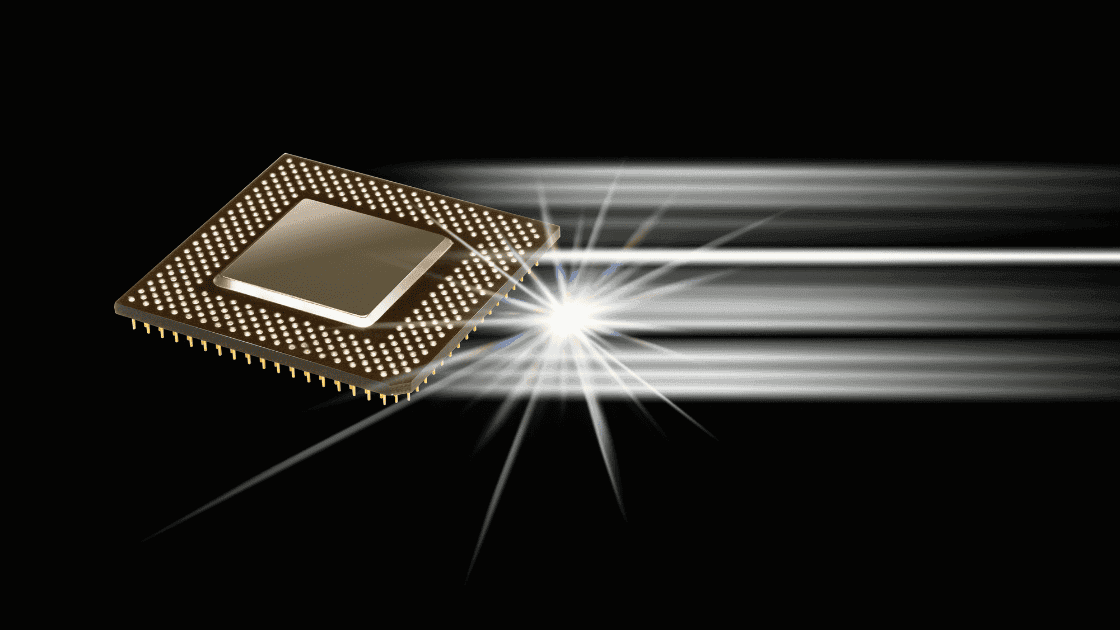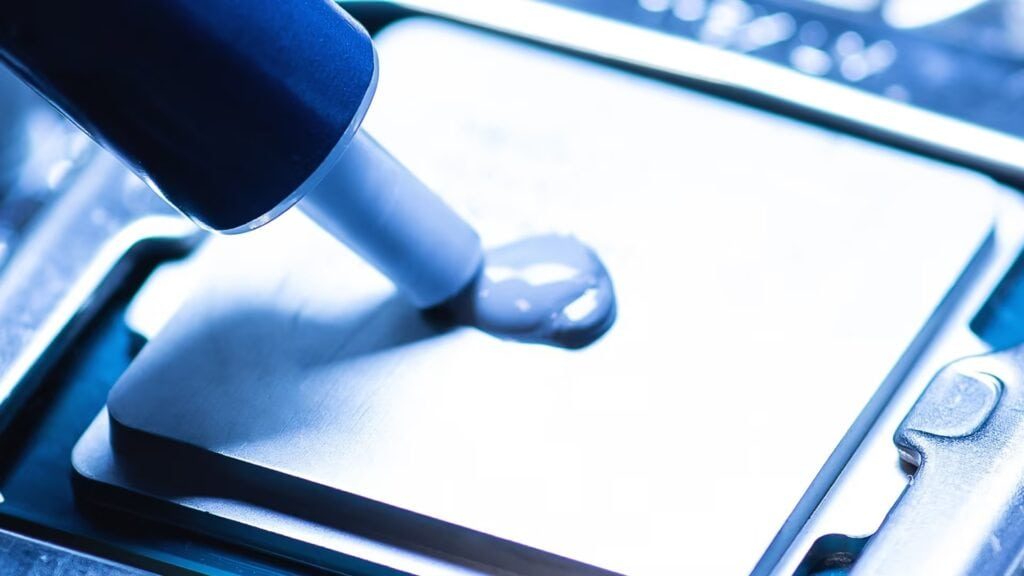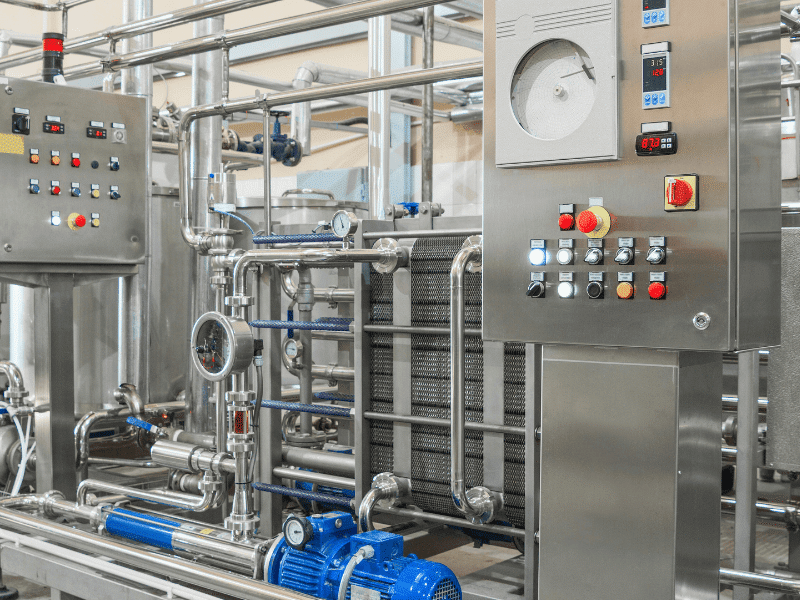Intro to Thermal Pad
As a business owner or common user, have you ever thought about the manufacturing process of a thermal pad? If not yet, this guide will help you to understand that process A Thermal Pad is one of the Thermal Interface Materials used in electronic components. One uses it to control the rising temperature by ensuring a smooth transfer of heat elements from the component to a heat sink. Examples include CPU, GPU, Consoles, and other Consumer Electronics (small to large level)
The thermal pad has covered a huge business market where different types of these pads are installed in electronic components. Its notable types are silicone-based thermal pads, metal-based thermal pads, ceramic-filled thermal pads, graphite thermal pads, and phase-change thermal pads. Each type has significant compatibility with components as per the requirement or nature of the product/component. Now let’s move towards the core discussion and cover its manufacturing aspects.
Manufacturing Process of Thermal Pad
[NOTE] There is a difference between a Thermal Pad and a Quality Thermal Pad. A quality thermal pad is always a result of a quality manufacturer. Because quality manufacturers always prioritize using quality ingredients or raw materials.
They prefer a professional team, and the latest manufacturing machinery, and adopt eco-friendly strategies. Our manufacturing guide will cover the whole process followed by the quality manufacturers.
– Quality Raw Material:
The manufacturing process of every product starts with choosing quality raw materials or ingredients. Similarly, in the case of thermal pads, base material, thermally conductive fillers, and other additives are selected as raw materials.
(a) Base Materials: The base materials for thermal pads offer them a solid state, flexibility, and durability. It further includes,
- Silicone Elastomers: provides flexibility & elasticity.
- Polyurethane/Acrylic Polymers: provides stability and non-silicone compatibility.
- PCMs (Phase Change Materials): provides smooth contact and shape flexibility.
- Graphite: provides high performance and durability.
(b)Thermally Conductive Fillers: The thermally conductive fillers for thermal pads ensure a smooth thermal conductivity between the components. It further includes,
- Ceramic-Based Fillers: include Aluminum Oxide, Boron Nitride, and Silicon Carbide. They function to provide electrical insulation and thermal conductivity.
- Carbon-Based Fillers: include Graphene, Carbon Nanotubes, and Graphite Powder. They function to provide high thermal conductivity for high-end devices/components.
- Metallic Fillers: include Aluminum, Copper, and Silver. They also provide high thermal conductivity, reliability, and durability to electronic components.
(c) Other Additives: ensure a smooth mixture of ingredients, bonding of pads, and surface attachment. It further includes,
- Adhesive Elements: for smooth contact between the surfaces.
- Anti-Fire Elements: for avoiding overheating and fire.
- Anti-Aging Elements: for longevity and durability.
– Material Mixing & Blending
In the mixing phase, the raw materials including base materials and thermally conductive fillers are mixed according to the type and form of thermal pads required. Additives are also added to ensure a smooth mixture.
Material engineers calculate the recommended amount for each ingredient. Once the mixture machine does its job, the material is passed to the blending machines. Where it passes through a compounding process and transforms into a uniform or paste-like nature.
– Sheeting & Thickness Control
The sheeting and thickness control is another phase in the manufacturing process of the thermal pad. It takes place soon after the mixing and blending of the raw material. The paste or gel-like material is attached to sheets of different sizes and thicknesses.
Manufacturers adopt several methods for this process including calendaring and casting. These methods ensure a uniform level of sheeting/thickness for thermal pads and make it easy to cut into shapes accordingly with full consistency.
– Curing Phase
Here the semi-ready form of thermal pad material is placed in a controlled temperature and environment for curing. A deep touch of several heat levels, UV curing, and chemical curing formulates the ingredients into a stable final form. The curing period usually depends upon the type and nature of the thermal pads.
Similarly using the specific curing method also depends upon the type and nature of the thermal pad. Even some thermal pads require constant pressure to transform into the final form.
– Cutting/Shaping Process
Once the curing process is complete, the next process is to cut and shape the thermal pads into desired dimensions and sizes. Manufacturers use different cutting and shaping methods like laser cutting, die cutting, and computer-numerical-control (CNC) cutting.
Adopting a specific cutting method also depends upon the type and nature of the thermal pad. Each of these methods requires the latest operating machinery and the contribution of highly professional workers.
– Quality Control & Testing
Well, the thermal pads are ready here and waiting for the quality control department to take a performance test for reliability and durability. They test for the product’s thermal conductivity, electrical insulation, flexibility, hardness, and other performance metrics.
Engineers check mark these parameters by testing under different temperature levels and loads. Most of the time, thermal pads get approval from the testing team because everything passes through a smooth manufacturing phase.
– Packaging/Storing
Finally, after getting approval from the Quality Control Department, the thermal pads are sent to the packaging team. The packaging team packs the thermal pads in different ways presenting them with the company’s logo/branding/manual. They also ensure the safety of pads by using protective sheets and layers around the boxes.
After that, the ready stock is sent forward to the warehouses, where thermal pads are stored in a recommended temperature and environment. Thumbs up, the manufacturing process of the thermal pad is completed here.
Read Also: Manufacturing Process of Thermal Paste
Applications of a Thermal Pad
– Electronics:
- CPUs, GPUs, Gaming Consoles,
- RAMs, Power Supplies, Heatsinks,
- Smartphones, Tablets, Smartwatches,
- LED Lights and LED Displays
– Automotive Indsutry:
- EV Batteries, Headlights, Dashboard Lights,
- Vehicle Computers, Sensors, Screen Panels,
– Industrial Level Products:
- Power Inverter, Power Modules, LED Lighting, Transformers,
- Solar Panels, Wind Turbines,
– Medical Equipment:
- CT Scan, X-Ray, MRI, and Ultrasound Machines,
- Blood Pressure Monitor, Blood Sugar Machines,
– Telecommunication Department:
- Network Equipments, 5G Stations,
- High-End Network Processing Units,
- Workstations and Servers,
– Air/Defence Systems:
- Radar Systems, Communication Gadgets, Satellite Systems
JiuJu’s Thermal Products
Market Experience, Quality Products, and Affordable Rates are known titles of JiuJu thermal interface materials. If we talk specifically about the thermal pads, they have expertise in manufacturing multiple types of pads. JiuJu’s products are up to market standards and capable of performing for low to high-end components.
JiuJu entered the thermal market two decades ago, during this whole tenure the company has successfully listed itself among the best manufacturers. The products manufactured by JiuJu are widely used in different parts of the world by more than 500 businesses. Whereas, the monthly production at JiuJu easily achieves the scale of 20 plus tons.
If you as a business/consumer want to be one of those 500-plus clients using the quality thermal products by JiuJu. Contact their customer support department with your relevant queries about the products and get a quotation for each. The company will offer you wholesale rates, discounts, perks, and other benefits,
Wrapping Up
The thermal pad manufacturing process involves deep research, calculated quality ingredients, upgraded manufacturing machinery, and a skilled team of experts. Every step from choosing the raw material to testing the final product involves a high-level contribution of the team plus machinery.
After fulfilling the required criteria, a quality thermal pad is produced that proves to be an effective solution against heat management. Moreover, A reputable manufacturer always fulfills this criterion and never compromises on the quality of its products.
Just visit JiuJu to get quality thermal interface materials at wholesale rates.





